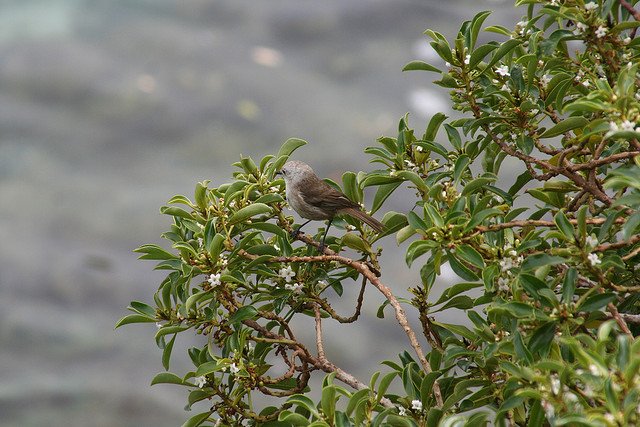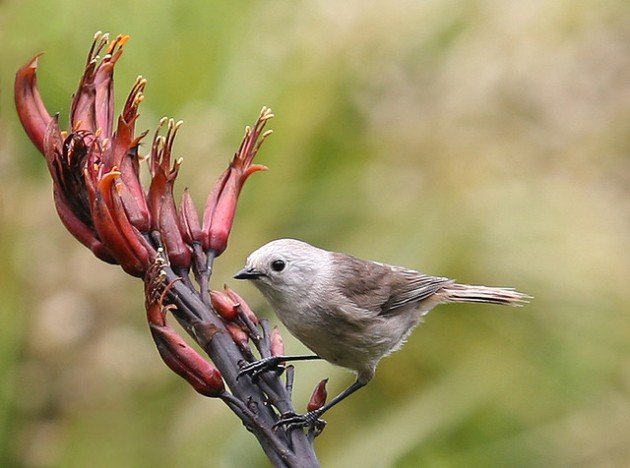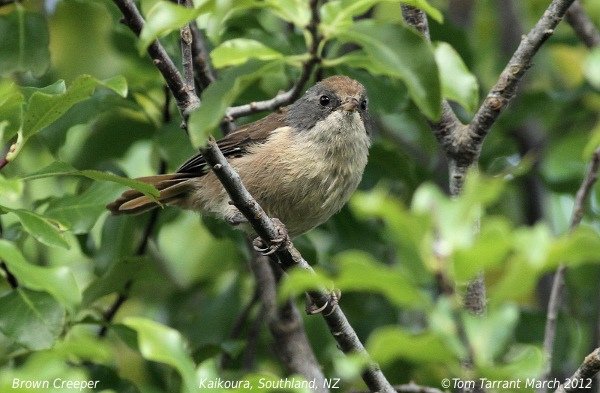
If you’re into family ticks, and into armchair ticks, well, I hope you’ve been to New Zealand, because the island just got another endemic bird family. Say hello to the Mohouidae.
Whitehead (Mohoua albicilla) by Rosie Perera (Creative Commons)
That the three species of mohoua (genus Mohoua) are New Zealand’s newest family is hardly a surprise. Like many of the new families they represent a lineage that no one could quite work out where to put. They have most recently been placed with the whistlers, and Australasian group that is something of a dumping ground for antipodean oddities, but they have also been placed, awkwardly at times, with the tits, babblers, logrunners, cuckoo-shrikes, fairy wrens, Old World warblers (obviously) and the Australasian warblers.
There are three species of mohoua, the Whitehead, Yellowhead and Brown Creeper (Americans unable to distinguish between creepers and treecreepers notwithstanding). The Yellowhead is endangered, the other two are a bit commoner in protected forests. Interestingly all three species are restricted to a single island, two on South Island and one on North Island. They are mostly arboreal, and are the only host species of one of New Zealand’s two cuckoo species, the Long-tailed Cuckoo.
Brown Creeper (Mohoua novaseelandiae) by Tom Tarrant (Creative Commons)
So welcome mohoua’s to the exalted ranks of New Zealand’s endemic bird families, the kiwi, New Zealand wrens, wattlebirds, New Zealand parrots and the Stitchbird. They are another sign of New Zealand’s amazing biodiversity, and the long evolutionary history and isolation. Hopefully they will remain part of that history.















I haven’t seen the Whitehead not having visited the North Island since becoming a birder, but the other two are most appealing, and in Mt Aspiring National Park Yellowhead were a highlight, especially when the sun caught them.